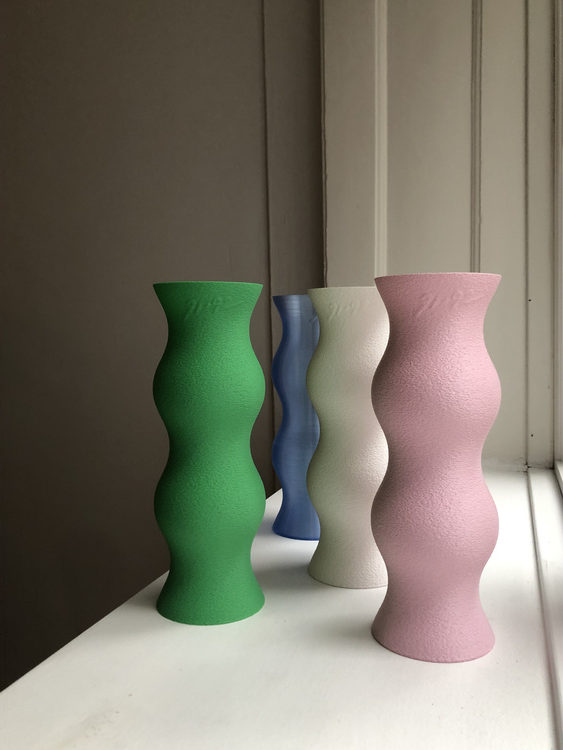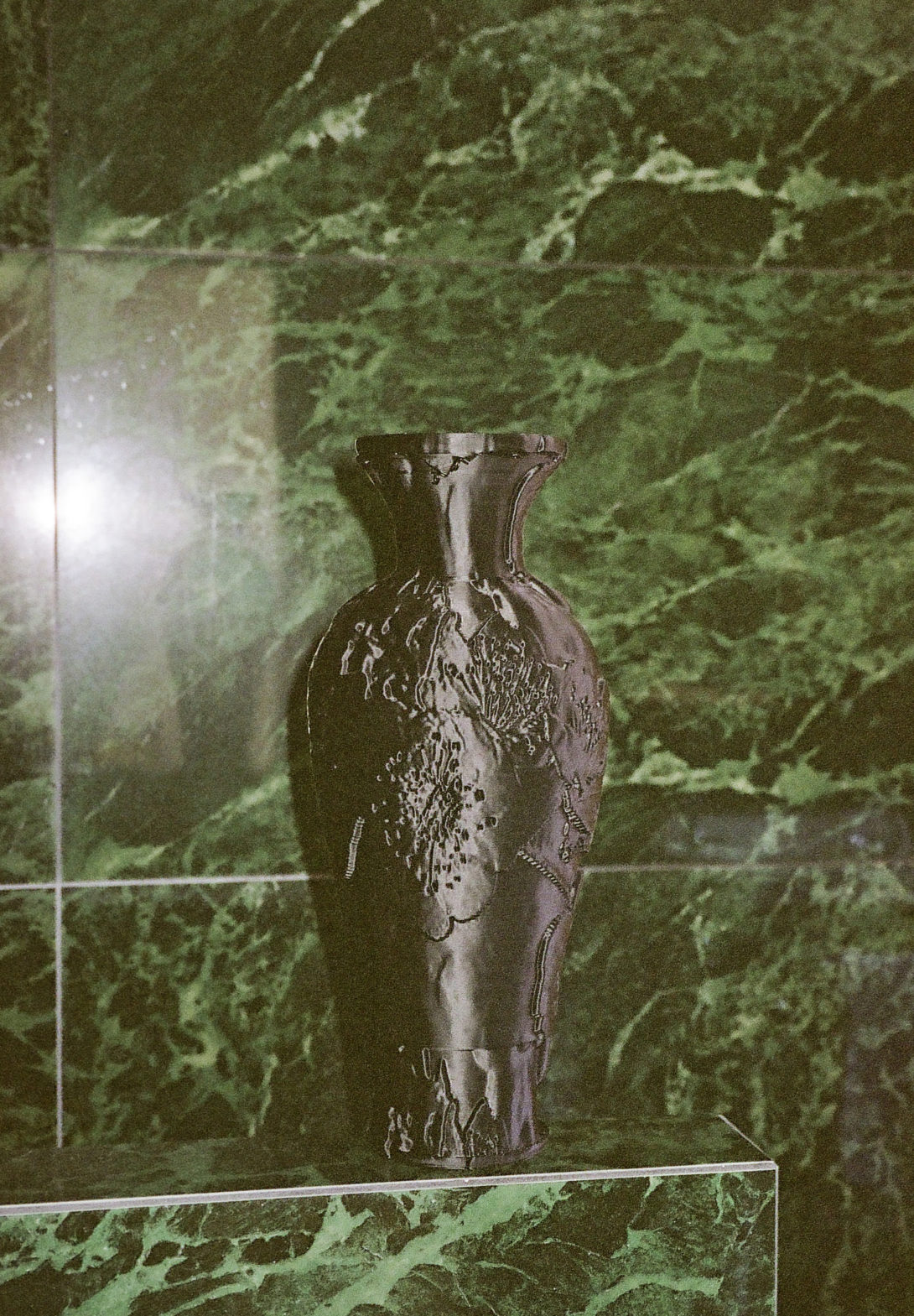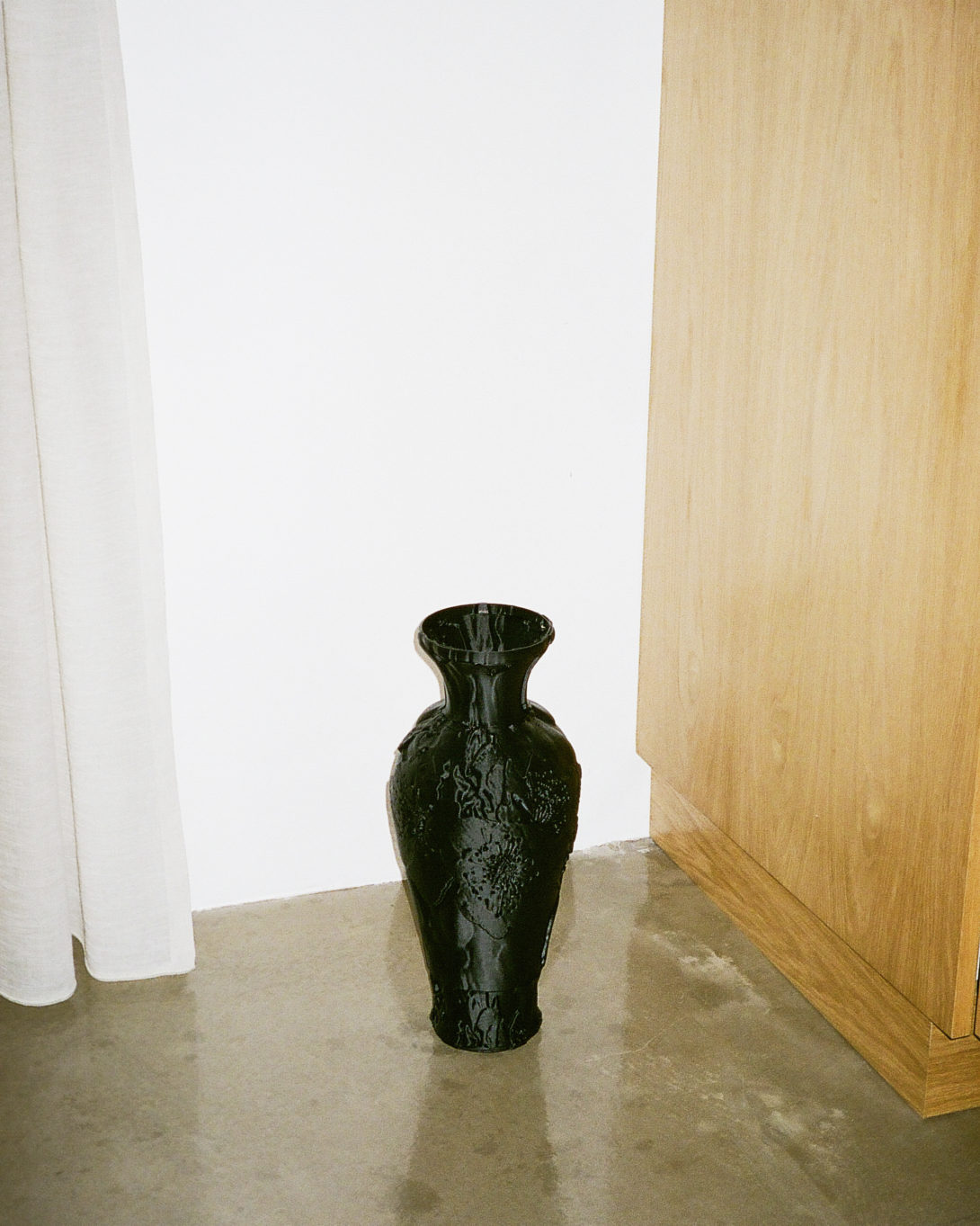Talent

91-92
A project by
Weibo Sun & Zeyu Rong
- Profession
- 3D print specialists
- Project
- 91-92
- Based in
- Copenhagen
- Platform Member
- Maker
- Works at
- Maker / Viadukten
About the project
91-92 (ninetyoneninetytwo) is a Copenhagen based sustainable 3D printing studio funded by Zeyu Rong and Weibo Sun in 2020
91-92 uses 3D printing to disrupt conventional design and production. 91 -92 designs and 3D printing all the objects locally in central Copenhagen
The role of the studio is to design, develop, and produce everyday objects and furniture made from recycled plastic. We believe 3d print can be more involved in daily life. By using 3D printing technology, we can localize our production, minimize material waste, and reduce energy consumption. Our material choice is EU-sourced filaments from recycled plastic – PET and PETG, which are commonly used for drinking bottles and packaging. rPET and rPETG are both durable and high incompetence.
A statement piece for the center spotlight. Inspired by the iconic Meiping shape from Song dynasty (960-1279), the Vase with Three Plum Blossoms mapped three displacement plum blossoms as the surface embellishment, which creates a surreal visual stimulation.
Design
At ninetyoneninetytwo, we believe design can only move forward with a conscious purpose and 3D printing is part of the future in design. Instead of producing new And it is better to be done by using existing materials. From the beginning, we have set the tone to only work with recycled materials. All the products are designed in a peculiarly yet reasonable shape which can be 3D printed without support material to minimize the production waste.
Material
At ninetyoneninetytwo, we insist on using entirely recycled material for every product. Our 3D printing filaments are produced from recycled plastic extrusion. Plastics are omnipresent in fields of manufacturing, production, and packaging so the choice to recycle used plastics is a direct effort to create a closed loop for this material’s life cycle. As a durable and cost efficient material, plastic is made to last. This durability, coupled with a relatively simple transforming process, does not require high energy consumption and produces a recycled plastic that can be readily used in many other applications and processes.
We use the 3D print filaments made by recycled PETG or recycled PET. The filaments maintain similar properties from the original plastic – lightweight and high resistance. It makes our products durable and avoids unnecessary damage while shipping.
3D print
We are using recycled plastic filaments sourced from the EU. Plastic waste is a management dilemma found almost everywhere in the world and recycling factories are already localized in many places. Local 3D printing manufacturing can be achieved by setting up 3D machines and producing recycled plastic filaments, in locations where our products would be sold. Then, the same products can be produced everywhere from common, shared printing files.
Reduced waste
Our ambition with all of our form-finding as we design is to completely remove any need for support material – reducing waste which is otherwise an assumed default in typical standard additive-manufacturing processes.
No surface finishing after printing
Typical surface finishing for 3d printing includes sanding, painting, vapor smoothing and epoxy coating. We have decided to avoid these processes to reduce unnecessary waste and pollution. In our process, intended surface quality is achieved by optimizing the design and playing with the printing parameters.
Mono-material
We design every one of our products to make sure there is no extra element or tool needed for assembly. In order to connect the seat and legs for the Soft Is stool, we designed a set of custom-made bolts with built-in spirals, so all parts can be simply screwed together. The 70s Floor Lamp is hand-welded with recycled filaments instead of any glue.
We make sure there is only a single type of material used in each product. This makes the re-use and recycling of the material is much easier. We promise that no glue, metal joint or any other material is used in our products.
Circular economy
In a circular economy, materials are recovered, regenerated and reused. Our 3D printing filaments are produced from recycled PET and PETG. The extrusion technique gives recycled plastic a new shape. We rescued plastic waste to produce our furniture and home accessories, bringing new life to what would otherwise be a non-biodegradable material waste. We are also conscious about further upcycling. By keeping the products a single material, it reduces potential issues that plastic recyclers often face with composite plastics as they have to separate materials through demanding, and often toxic processes. These composite plastics, as well as unclean plastics often causes products to not be recycled and prevents the material from completing a closed loop system.



